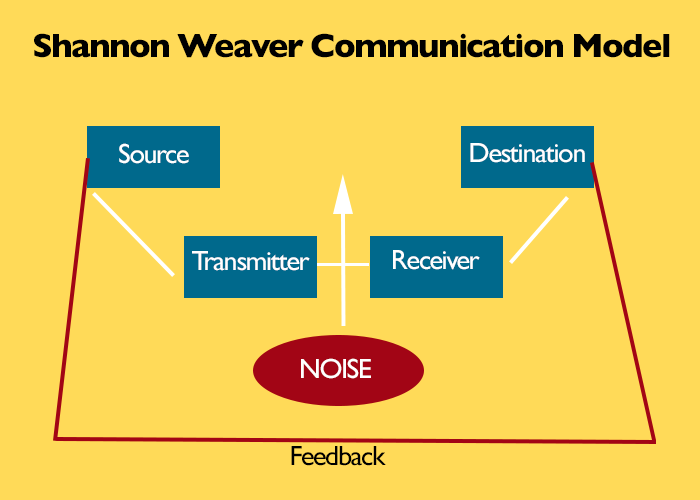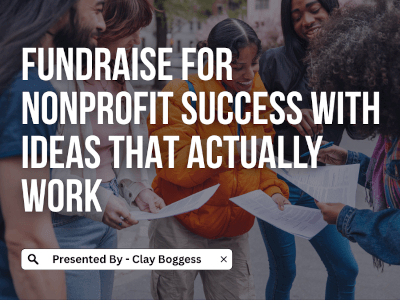
How school fundraisers benefit from connected & communicative leaders.
In an earlier post, we shared that a survey by the National Association of Elementary School Principals (NAESP) found that 94% of schools fundraise to cover resource gaps. In the same survey, NAESP also found that 67% of principals will delegate the management of a fundraiser over to volunteer leadership, like a Parent Teacher Association (PTA) or Parent Teacher Organization (PTO).
Now, consider that a Parent Teacher Association or Parent Teacher Organization comprises at least eight active board members to fill essential roles. Multiply this by over 100,000 elementary, middle, and high schools; nearly one million parents are responsible for helping their child's school make ends meet.
The reality is that school fundraising programs might be one of the most taxing tasks for the volunteers who selflessly offer themselves to help schools close those critical gaps in funding. The result is that volunteers find themselves in a leadership position, working with their peers and the parents of other children, as well as school administration and community members. Juggling these tasks can make a mom feel like a full-time resource development officer who still has to get the kids to school on time.
Given the transient nature of any student body, leadership is often only as consistent as a child's tenure at a given school. Turnover and changes in PTA/PTO leadership and among faculty and staff can make cultivating community relationships difficult and fundraising even harder.
As recently as 2014, The Association of Fund-Raising Distributors and Suppliers (AFRDS) reported that product sales alone bring in more than $1.4 billion annually, with more than 85% of that sum going to schools. With this kind of return, you can bet that, despite their challenges, school fundraisers will continue to be a part of your child's educational experience.
While most schools opt for an easy and impactful turnkey fundraising idea that often has the potential to raise big money, much of the success rides on a volunteer committee's ability to organize and implement these tools.s
To raise the most money, a fundraiser needs to be inspired, connected, and communicative leadership. Big Fundraising Ideas unpack these core leadership traits that can help you reach higher fundraising goals than ever before.
School Fundraisers Need Inspired Leadership
Fundraising programs are inextricable from financial need. When resources are low and costs are high, the energy inspired by the leadership elevates a commonplace fundraising campaign to something that makes a cultural and financial difference in an educational institution.
Professional fundraiser Simone Joyaux, AFCRE, outlines many essential leadership qualities for fundraisers in her book Strategic Fund Development. One of a leader's "top functions" is to motivate others. Joyaux urges fundraisers in any setting to "Encourage commitment, not just compliance, by engaging the collective beliefs of people in your organization and its mission."
As the adage goes, you can't give what you don't have. Whether you're PTA president or fundraising committee chair, your peers will look to you to set the tone, manage expectations and provide the inspiration for months of hard work. That means your engagement with your school's mission is priceless in setting your school fundraising program up for success.
As a fundraising leader, whether volunteer or professional, it is essential to consider your role as a source of energy for those supporting your fundraising program. The Association of Fundraising Professionals outlines "six leadership value propositions for fundraising professionals" that provide valuable insight for volunteer fundraisers. Two of these propositions focus on being an inspired leader by embracing your role as the "conscience of mission" and the "catalyst of impact."
You need to be aware of the mission, vision, values, and goals of your fundraising program and organization. Still, you also must use that sense of purpose to ignite a team of other fundraisers by casting a vision of what will happen if you successfully meet your goals.
Seek inspiration for yourself to share readily with and empower others. Make it a goal to meet regularly throughout the fundraising campaign with key stakeholders in the school, including teachers, aides, and executive staff, to assess what this fundraiser will do for the school. Ask this community you're serving what they want their school to look like in five years.
Then, share these visions with your team and other volunteers. When the going gets tough, your peers will look to the vision you cast and the stories of impact you consistently share to keep them going.
School Fundraisers Need Connected Leadership
Zip codes. Zoning rules. Neighborhood borders. Transit routes. Schools are notoriously boxed in by red tape and district regulations, making it challenging to build the kind of network an organization that fundraises annually can benefit from to ensure long-term success.
Luckily, the leaders spearheading school fundraising programs are not subject to the same limitations. Those parents and community volunteers who are in charge of bridging the resource gap can dramatically improve fundraising results by leveraging their network beyond the neighborhood. Online fundraising leader Classy notes that friends and family will most likely donate and support your cause. If you're invested in the mission and committed to being an inspired leader, utilizing your connections will naturally follow as you pave the way as an ambassador for your school's fundraising program.
In the fundraising world, using a network to create a list of potential customers or donors is part of "prospecting." The most successful fundraisers will include a comprehensive list of prospects from all the officers involved in the fundraising program. These can include personal connections at work, church, or other community groups, as well as local businesses and restaurants of which you're a patron. Even your social media followers can be valuable connections to catapult your school fundraising idea to the next level of success.
After cultivating engagement on your fundraising team, get down to brass tacks and list your resources. The Fundraising Authority offers some powerful ways that professional fundraising organizations can amplify the impact of their prospect list, and many of these translate perfectly into the volunteer fundraiser space. Things like "writing down your prospects" and "asking current donors" may seem like obvious tips, but when it comes to prospecting, you may not consider things like holding an ask-free mid-year event to cultivate donors.
Good development leaders will know that connections beyond those directly resulting in cash flow can be valuable assets to a successful fundraiser. Make it a practice to consider all connections and how someone's network might be able to support your school's fundraiser indirectly. The best fundraising ideas often involve incentives, prizes, and even promotional assets that local businesses and friends can provide as "in-kind" support for your school's campaign.
For example, a Florida florist worked closely with a committee member overseeing a significant spring event for a healthcare nonprofit. The committee member couldn't get a cash-in-hand donation from her florist friend, but she could get the flowers donated for centerpieces. While essential to helping create a beautiful backdrop to the event (and cutting down overhead), these flowers represented a more meaningful opportunity for the committee member. She took her connections, leveraged their value, and turned the floral centerpieces into an opportunity for giving. The flowers, donated for free, were sold to patrons for a modest contribution, which resulted in nearly $1,000 extra for the foundation.
The best leaders and most successful fundraisers will seek connections like these in their networks to help bridge gaps and create opportunities for increased giving.
School Fundraisers Need Communicative Leadership
The communication model in Western society hasn't changed much over the past century. The fundamentals of the communication process are virtually immutable and hold in nearly all environments, from medicine to business to--you guessed it--school fundraising.
Leaders across for-profit and not-for-profit corporations are probably most familiar with the Shannon and Weaver communication model that emerged in the 1940s. The best fundraising leaders, especially those working as volunteers, should keep this model in mind and pay close attention to one key piece: noise.

Noise comes from homework, meals, work, caregiving, and wrangling busy schedules. It can also come with unexpected personal stress, health issues, and even car trouble. From the day-to-day to the unexpected, you and your team of fundraisers will face distractions from every direction, making it easy to lose sight of the mission and goal of your campaign.
Nevertheless, as a committee member, leader, or support volunteer, the responsibility rests with you to contend with the noise and continuously provide clear, focused, and meaningful communication to your team. School fundraisers need leaders committed to communicating to overcome these obstacles so that the fundraising is executed promptly, effectively, and organized.
Katie Douthwaite Wolf is an author for top business and professional development hubs like Forbes, BusinessWeek, and The Muse. Her management career helped her develop a keen understanding of what intentional communication that generates results looks like. Her tips on communicating confidently, clearly, and with execution and expectations are crucial to getting your message across in a quick PTA meeting or an email.
If you're leading a school fundraiser this year, consider these tips that will help your communication splice through the noise and stick with your team:
- Have a mission moment: give your team the inspiration they need with a thirty-second anecdote about a problem your fundraising has previously solved or will solve this year.
- Give praise: inspiration isn't just about vision; it's about lauding your team in the present. Call out best practices and give validation as a leader.
- Communicate milestones: let your team know when you've reached 25%, 50%, and 100% of your goal. Updates like this help fundraisers gauge effectiveness and urgency.
- Give clear directives: don't leave them questioning what to do next. As Wolf said, people look to their leader for answers, not more questions. If more neighborhoods need canvassing or brochures need distributing, ask for volunteers.
- Keep a timeline: Working in a time-bound situation will help your team maintain energy if they know a deadline is nearing. As the project manager, your job is to keep the fundraiser on track and prioritize what needs to be done.
Communication for effective leadership can be just as much a science as an art. Don't be afraid to draw out a message map to ensure you cover all key points. If you're utilizing written communication, use the tips above as headers to help organize information. Keep it short, but say what needs to be said.
And while all these tips about the information you put out are valuable, the most critical aspect of being a communicative leader is your willingness to receive feedback. Look at that communication model; your team's messages are essential to continue open and effective communication. Listening helps you solve problems in a way that strengthens your team and raises more money for your school. If someone has a question or concern, hear them out, and make sure they feel heard.
School Fundraisers Deserve Support
Leading a fundraiser for a school is challenging, and we commend the countless parents and volunteers who step up and help close the gap to support education. Big Fundraising Ideas strives to provide high-quality and high-yield turnkey fundraising solutions.
You're not alone in this mission, and we've got tons of opportunities for you to bring great products to your community to make a daunting fundraiser easier and more effective as you lead your team to success.
Author Bio
Clay Boggess has been designing fundraising programs for schools and various nonprofit organizations throughout the US since 1999. He’s helped administrators, teachers, and outside support entities such as PTAs and PTOs raise millions of dollars. Clay is an owner and partner at Big Fundraising Ideas.



